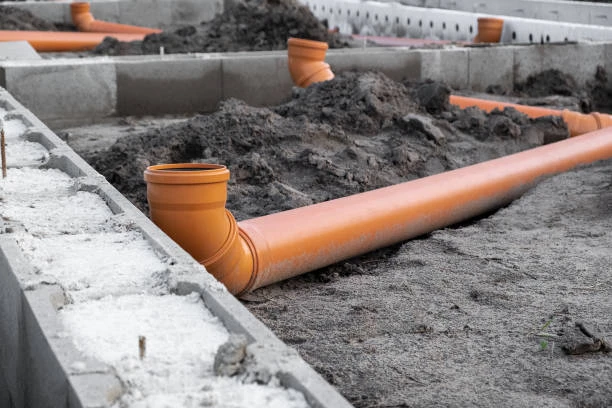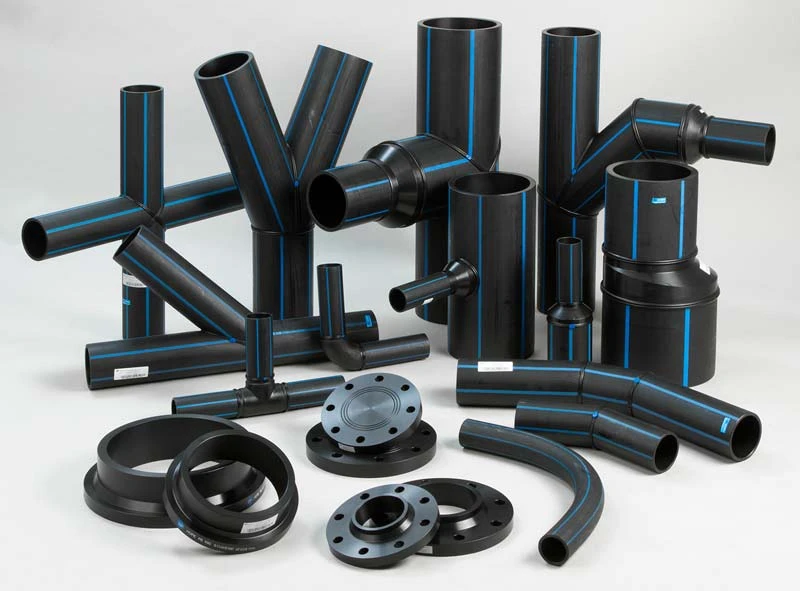High-Density Polyethylene HDPE pipe are becoming increasingly popular in various industries due to their durability, flexibility, and resistance to corrosion. As we look into 2023, understanding the price per ton of HDPE pipes is essential for contractors, suppliers, and industries that rely on these materials for infrastructure projects. This article will delve into the factors influencing HDPE pipe prices, market trends, and how to estimate costs effectively.

Understanding HDPE Pipe
Before we dive into pricing, it’s important to understand what HDPE pipes are. HDPE is a thermoplastic polymer made from petroleum. Its unique properties make it suitable for various applications, including:
- Water Supply Systems: Due to their corrosion resistance and flexibility, HDPE pipes are widely used for transporting water.
- Sewer and Drainage Systems: Their durability makes them an excellent choice for sewage systems and stormwater management.
- Gas Distribution: HDPE pipes are also used in gas distribution networks due to their strength and resistance to chemicals.
Key Benefits of HDPE Pipe
- Durability: HDPE pipes can last over 50 years with proper installation and maintenance.
- Flexibility: They can be bent without breaking, allowing for easy installation in complex environments.
- Cost-Effective: While initial costs might be higher, the long lifespan and low maintenance needs make HDPE pipes a cost-effective solution.
- Environmentally Friendly: HDPE pipes are recyclable, contributing to sustainable practices in construction.
Factors Influencing HDPE Pipe Prices
Several factors play a crucial role in determining the price per ton of HDPE pipes. Understanding these can help buyers make informed decisions.
1.HDPE pipe Raw Material Costs
The price of HDPE pipes is largely influenced by the cost of raw materials. Fluctuations in crude oil prices directly impact the cost of polyethylene, which is derived from oil. As oil prices rise or fall, so too do the costs associated with manufacturing HDPE pipes.
2. HDPE pipe Production Costs
Manufacturing processes for HDPE pipes involve various costs, including energy, labor, and equipment maintenance. Advances in production technology can reduce costs, but any increases in operational expenses can lead to higher pipe prices.
3. HDPE pipe Market Demand
Market demand significantly affects pricing. In 2023, sectors such as construction, infrastructure development, and agriculture are experiencing high demand for HDPE pipes. Increased demand can lead to higher prices, especially if supply cannot keep pace.
4. HDPE pipe Supply Chain Dynamics
The logistics involved in transporting HDPE pipes from manufacturers to end-users can also influence prices. Disruptions in supply chains, such as those caused by global events or local issues, can lead to increased transportation costs, further impacting the price per ton.
5. HDPE pipe Regulatory Compliance
Adherence to industry regulations and standards can affect pricing. Manufacturers may need to invest in specific technologies or processes to meet safety and environmental standards, which can be reflected in the final price of HDPE pipes.
6. HDPE pipe Product Specifications
HDPE pipes come in various sizes, pressure ratings, and grades, which can affect pricing. Higher-grade pipes designed for specific applications, such as high-pressure water systems or chemical transport, typically cost more than standard pipes.
Current Pricing Trends for HDPE Pipe in 2023
As of 2023, the price of HDPE pipes per ton varies significantly depending on the factors discussed above. Here’s a general overview of current pricing trends:
Average Price Range
In 2023, the average price of HDPE pipes ranges from $1,200 to $1,800 per ton. This range can vary based on the quality, size, and specific application of the pipes.
Regional Variations
Pricing can differ significantly from one region to another due to local market conditions, availability, and transportation costs. For instance, regions with robust manufacturing facilities may see lower prices due to reduced transportation costs, while remote areas may experience higher prices due to logistics challenges.
HDPE pipes Industry-Specific Pricing
Certain industries may face higher prices due to specific requirements or standards. For example, HDPE pipes used in the oil and gas sector may be priced higher due to the need for enhanced durability and compliance with stringent regulations.
Estimating Costs for HDPE Pipes Projects
When planning a project that involves HDPE pipes, it’s crucial to estimate costs accurately. Here are some steps to help you in this process:
1. HDPE pipes Identify Project Requirements
Determine the specifications needed for your project, including the size, type, and pressure rating of the HDPE pipes.
2. HDPE pipes Research Suppliers
Investigate various suppliers to compare pricing. Request quotes from multiple vendors to find the best deal while ensuring quality.
3. HDPE pipes Calculate Total Costs
In addition to the pipe costs, consider other expenses such as transportation, installation, and any necessary fittings or accessories.
4. HDPE pipes Factor in Long-Term Costs
While upfront costs are essential, consider the long-term benefits and savings associated with HDPE pipes. Their durability and low maintenance needs can lead to significant savings over time.
5. HDPE pipes Stay Updated on Market Trends
Monitor market trends and pricing fluctuations regularly. Being informed can help you make timely purchasing decisions to capitalize on lower prices.
Future Projections for HDPE Pipes Pricing
Looking ahead, several factors will likely influence the pricing of HDPE pipes in the coming years:
1. HDPE pipes Sustainable Practices
As industries shift towards more sustainable practices, the demand for environmentally friendly materials like HDPE is expected to grow. This could lead to an increase in production capacity and potentially stabilize prices.
2. HDPE pipes Technological Advancements
Improvements in manufacturing technology could result in lower production costs, which may be passed on to consumers in the form of reduced prices.
3. HDPE pipes Global Economic Conditions
Economic conditions, including inflation rates and global trade dynamics, will continue to affect the price of raw materials and, subsequently, HDPE pipes.
4. HDPE pipes Regulatory Changes
Changes in regulations concerning safety and environmental standards may impact manufacturing processes and costs, influencing pricing.
Conclusion
In conclusion, the price of HDPE pipes per ton in 2023 reflects a complex interplay of various factors, including raw material costs, market demand, and regional variations. As industries continue to recognize the advantages of HDPE pipes, understanding these dynamics will be crucial for making informed purchasing decisions. By keeping abreast of market trends and estimating costs accurately, businesses can ensure they invest wisely in this essential material.
Frequently Asked Questions (FAQs)
- What is the average price of HDPE pipes per ton in 2023? The average price ranges from $1,200 to $1,800 per ton, depending on various factors.
- What factors influence HDPE pipes prices? Factors include raw material costs, production expenses, market demand, supply chain dynamics, and product specifications.
- Are HDPE pipes environmentally friendly? Yes, HDPE pipes are recyclable and contribute to sustainable practices in construction and infrastructure.
- How can I estimate the total cost of a project involving HDPE pipes? Consider the specifications, research suppliers, calculate total costs including transportation and installation, and factor in long-term savings.
- What are the applications of HDPE pipes? HDPE pipes are commonly used in water supply systems, sewer and drainage systems, and gas distribution networks.

















